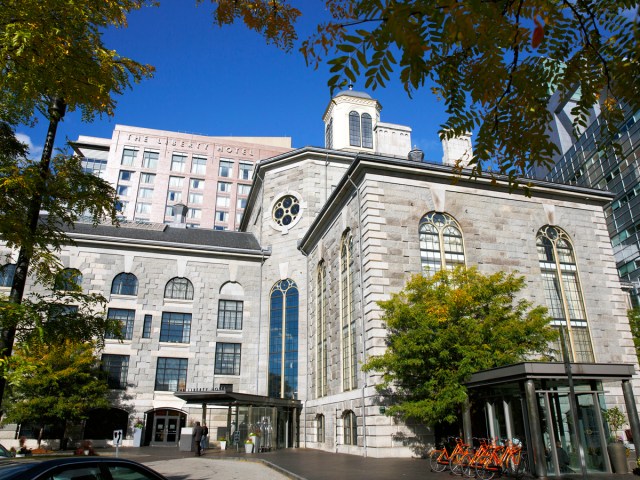Often, landmark buildings end up serving entirely different purposes than those they were originally built for. It may be difficult to imagine that a luxurious hotel once housed notorious criminals of a bygone era, but below you’ll find five fabulous penitentiaries-turned-hotels in the U.S. and Europe.
Note: All featured products and deals are selected independently and objectively by the author. Daily Passport may receive a share of sales via affiliate links in content.
Four Seasons Hotel Istanbul at Sultanahmet – Istanbul, Turkey

This five-star hotel in Istanbul’s historic district was once the first jailhouse in the capital of the Ottoman Empire. Originally designed as a guesthouse, the project shifted focus in 1918, and by 1919, it became the Sultanahmet Jail, a penitentiary for the empire’s most serious offenders. Located next to the courthouse, the jail also housed detainees awaiting trial. Many famous Turkish writers and poets were imprisoned here, and a few produced some of their most enduring works behind its bars.
After the construction of a new jail, Sultanahmet was closed in 1969, and the prisoners were relocated. However, the building briefly reopened in 1980 as a prison for political detainees before closing in 1986. A decade later, the doors opened again, but this time as a luxurious Four Seasons hotel.
After extensive renovations, the former jail was transformed into one of Istanbul’s top hotels, featuring 65 rooms and suites, a spa, contemporary Turkish art, and traditional woven kilim (rugs). Despite the hotel’s modern atmosphere and world-class hospitality, the building retains its neoclassical architecture, with original marble and stone elements still in place.
The Liberty Hotel – Boston, Massachusetts

The building currently occupied by the Liberty Hotel in Boston’s Beacon Hill neighborhood once served as the Charles Street Jail. Built between 1848 and 1851, the jail housed infamous criminals such as James “Whitey” Bulger and Frank Abagnale Jr. before eventually closing in 1990.
The building’s past is reflected in the hotel’s design, with exposed brick walls and catwalks offering sweeping views of what was once the central courtyard. Throughout the Liberty Hotel, nods to the jail’s history — like preserved wrought-iron bar detailing and aptly named restaurants (Alibi and Clink) — contrast playfully with the hotel’s contemporary decor.
Nowadays, however, rooms feature Charles River views, marble bathrooms, and overstuffed armchairs — a stark contrast to the overcrowded conditions that led to a 1973 court ruling against the jail, prompting its eventual closure and construction of its replacement, the Suffolk County Jail.
The Bodmin Jail Hotel – Cornwall, England

With its stoic stone façade and utilitarian feel, the exterior of this four-star boutique hotel in Cornwall, England, still reflects its past as the Bodmin Jail. Built in 1779 by French prisoners of war under the supervision of military engineer Sir John Call, the jail operated until 1927. Over the following years, it served many purposes, from a car garage to a badminton court and even a nightclub. In 2018, a sizable investment saved the building from demolition and transformed it into the Bodmin Jail Hotel.
While the catwalks, chain-link fencing, and steel details are a nod to the building’s history, the original cells have been transformed into 70 guest rooms. Though they still feature the original cell doors, the interior atmosphere is softened by warm lighting, crisp white linens, and spontaneous pops of color. The original bars on the windows keep a hint of the building’s past, while velvet furniture and dim lighting make the common areas feel cozy and welcoming.
Mamula Island – Montenegro

The historic fort atop this secluded island in Montenegro’s Bay of Kotor was originally constructed in 1853. During World War II, the defensive fort was transformed into a concentration camp under Mussolini’s regime. Known for its harsh treatment of its inmates, which included women and children, the site faced controversy when plans emerged to convert it into a luxury hotel and wellness center.
Despite protests from families of former prisoners, the project moved forward, opening in spring 2023 as a luxury escape accessible from both Croatia’s southern tip and mainland Montenegro. The 32-room hotel offers a spa, beach club, marina, and multiple bars and restaurants. Alongside these upscale amenities, it features a historical memorial gallery to honor the fort’s 170-year history and the lives of its former prisoners.
Malmaison Oxford – Oxford, England

This former prison-turned-boutique hotel opened in 2008 in the historic center of Oxford. The building’s history dates back to 1071 when Oxford Castle was built by Robert D’Oyly, a nobleman of William the Conqueror. It was later converted into a notorious prison known as Oxford County Gaol. After prison reforms in 1888, it reopened as HM Prison Oxford, housing criminals ranging from the infamous Donald Neilson (the “Black Panther”) to 7-year-old Julia Anne Crumpling, who was sentenced to a week in prison for stealing a stroller.
Decommissioned in 1996, the prison was carefully renovated to retain its original features and reopened 10 years later as the Malmaison Oxford. The original ceilings, doors, and cells create an eye-catching contrast with contemporary pink chairs and gleaming wine glasses in the stylish restaurant below. Playful touches like a minibar designed as a row of lockers and original jail cell doors add a touch of character, while an adjacent museum features the intact turret of Oxford Castle. (Discounted tours are available for hotel guests.)
More from our network
Daily Passport is part of Inbox Studio, which publishes content that uplifts, informs, and inspires.
















